A shared hero in Turkic world, Köroğlu is known as Goroğlu in Azerbaijan and Turkistan and Köroğlu in Anatolia. According to the belief in Turkestan region, his mother Cembil Khatun was impregnated by light, and buried alive. Legend has it Köroğlu was born in his mother’s grave fed on her breasts, and thus named Goroğlu which means the son of grave. In Anatolia, Köroğlu is believed to had lived in the 16th century. He is known as Köroğlu, son of the blind because his father had been blinded by Bolu Governor. The symbols in the myth regarding Köroğlu’s birth resemble those in Oghuz Khan Myth and this suggests that Köroğlu dates back to older times. Köroğlu in Anatolia is the same character known as Ruşen Ali in the 16th century. Robin Hood is thought to appear for the first time in the history in 10th century in British folktales. Rumor has it Robin Hood joined the Crusades alongside Richard the Lionheart; he is “Samson” in the Holy Book. According to another legend, he is a Norman aristocrat named Fulk Fitz Waryn and defied the overtaxing British King John (1119-1216) and became an outlaw. In a different story, Robin Hood is a farmer who took advantage of the authority gap in England during the Crusades and waged war against Barons who imposed heavy taxes on the people. Robin Hood is considered both an aristocrat and a commoner and Köroğlu both as divine and a commoner.
Similar characteristics of protagonists in Ahmet Kutsi Tecer’s folktale compilation ‘Koçyiğit Köroğlu’ and Howard Pyle’s compilation ‘Robin Hood’ are as follows:
1. Köroğlu revolts against the Bolu Governor because Governor blinded his father and oppressed people. Robin Hood defies Nottingham Baron because Baron first killed his mother, and then his father and uncle.
2. Köroğlu defends people’s interest against the corrupt Bolu Governor in Anatolia in the 16th century; Robin Hood has the same reasons to fight against Nottingham Baron in England. Hence both heroes become outlaws. However both Köroğlu and Robin Hood protect the common people, blameless children and women in all their battles which makes them noble bandits with values.
3. The lyric aspect in Köroğlu and Robin Hood stories are women. In Köroğlu’s stories, there is the daughter of saz virtuoso, Köroğlu’s lover, daughter of Bolu governor Benli Nigar and Köroğlu’s son Arslan’s lover. Anna (Maid Marian) is the love interest of Robin Hood. Köroğlu falls in love with the daughter of saz virtuoso and wants to marry her however living in the woods without a house would be impossible. Robin Hood falls in love with Anna but he thinks he cannot convince her to live with him in the woods.
4. In both stories, heroes have companions fighting alongside them. Köroğlu’s best friend is Ayvaz and has 40 more comrades as Demircioğlu, Dağdeviren, Yarımese, Tabutagirmez. Robin Hood’s best friend is called Little John and has companions as David, Willy and young Saxon boys.
5. In Köroğlu story, comrades pledge allegiance to the band and take an oath of solidarity over mace, arrow and bow. In Robin Hood story, they pledge allegiance over same weapons.
6. Köroğlu wins wars with the help of his horse. This is not an ordinary animal, but a ‘Dapple Gray’ descended from Prophet Muhammad’s steed Buraq. Robin Hood has a holy ‘Arrow’ that hits all targets. Both triumph with help of those.
7. Köroğlu and his band use Mehter instrument to communicate and to intimidate the enemy in the battle. Robin Hood and his comrades have an antler for the same purposes.
8. Köroğlu hides in high forestlands in Çamlı Bel to fight against Bolu Governor; and similarly Robin Hood hides in Sherwood Forest to revolt against Nottingham Baron.
9. Köroğlu devotes himself to fighting for lofty aims as equity, justice and protecting the weak with direction from a spiritual wiseman named Kaman Ata; Priest Gilles guides and assists Robin Hood through difficult times.
10. Bolu Governor asks for Köroğlu’s horse in exchange for his friend Ayvaz, and sends Arslan who was unaware that Köroğlu is his father. Arslan is promised Bolu Governor’s daughter Benli Nigar. Tinner is sent to deliver the warrant of arrest and seize Robin Hood. A strong paladin, Tinner is promised 80 golds. In both narratives, heroic figures not acquainted with the protagonists are sent for arrest and promised valuable prizes in return.
11. Dispute between Oghuz Governors are subjects of Köroğlu tales; subject of Robin Hood tales are the wars between Saxon and Norman Barons.
12. In Köroğlu, Bolu Governor is not executed but forced to mount on a donkey backwards and exposed to make an example. In Robin Hood cruel Baron or corrupt trickster tradesmen fall into their own traps and learn their lessons or given advice.
13. At the end of the story, Köroğlu hands over his mission to his best friend Ayvaz and disappears on his horse. Robin Hood, appointed as the Earl of Huntingdon in London, marries Anna. Köroğlu does not lead an ordinary life like Robin Hood, and instead he vanishes to pursue higher purposes directed by Kaman Ata.



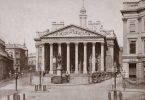
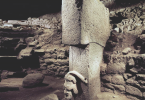

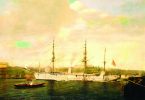
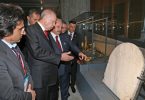
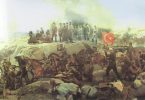
Leave a Comment